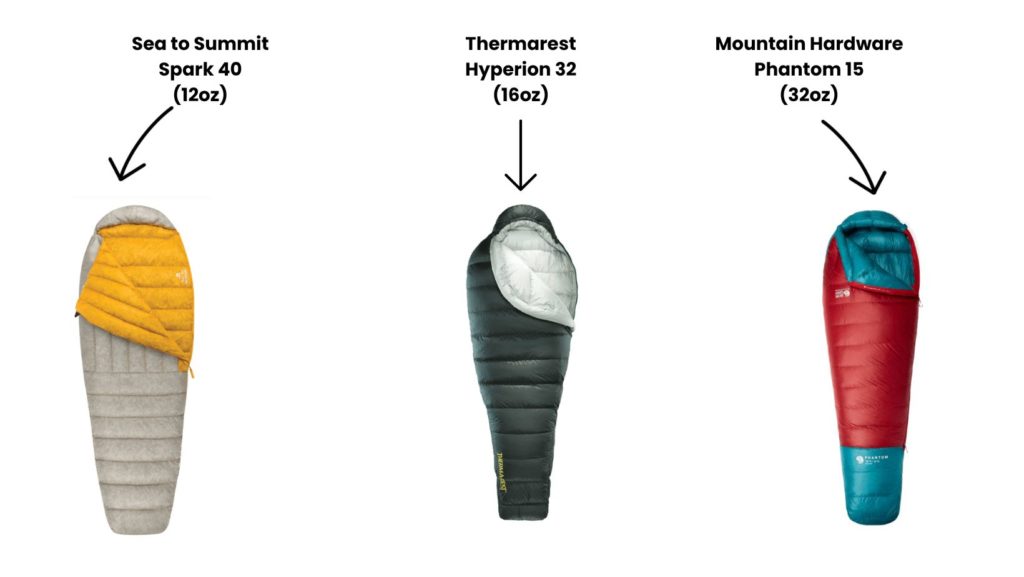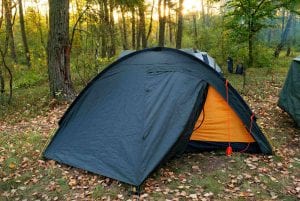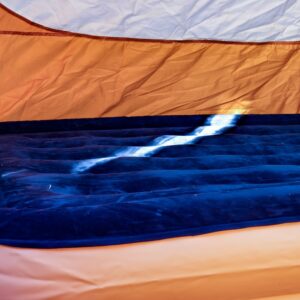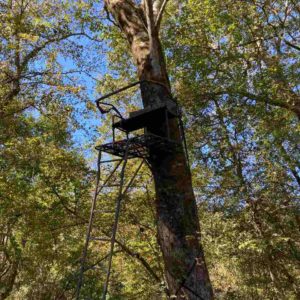
The only thing worse than lugging around unnecessary weight on a trip is spending a teeth-chattering night in a bag that’s not warm enough.
To help you skim those pack ounces without skimping on insulation (and other features), we’ve put together a guide to the lightest down sleeping bags on the market right now.
Whether you’re after a wallet-friendly down bag, a three-season one, or a featherweight model for fast-and-light trail runs, there’s sure to be something on this list for you. None of these down bags weigh more than 2lbs.
Here’s a quick rundown:
- The Sea to Summit Spark 40 is the lightest down bag we could find with a comfort rating of 44°F and weighing in at an extraordinary 12oz. Buy it here >>
- The Thermarest Hyperion 32 is just 1lb with a comfort rating of 44°F. Buy it here >>
- We love the Mountain Hardwear Phantom 15. OK, it weighs 2lbs but with a comfort rating of 23°F it has one of the best warmth to weight ratios we’ve ever seen. Buy it here >>
- The Kelty Cosmic 40 is the best budget buy on this list. It weighs 1lb 12oz and has a comfort rating of 48°F. Buy it here >>
- The Nemo Disco 30 is the biggest down bag on the list. Many of the others here are really narrow but the Disco has way more room. It weighs 1lb 15oz and has a comfort rating of 41°F. Buy it here >>
Sea to Summit Spark 40 — Lightest Down Sleeping Bag
Specs
Packed with 850 fill-power goose down, the Sea to Summit Spark 40 is an ultralight summer sleeping bag with a comfort range of 40°F–44°F, depending on how cold you sleep. It has a contoured mummy shape and ⅓-length zip, with a shoulder girth of 59″.
The Spark 40 weighs in at an incredibly light 12oz, and the insulation features Sea to Summit’s ULTRA-DRY Down water-repellent treatment. Pricing is mid-range for a sleeping bag of this quality.
The Verdict
The lightest bag on this list, the Spark 40 really is one for the gram-counting ultralighters. The flip-side is that it’s what you’d call a true summer bag, since the 40°F–44°F comfort range doesn’t give you much wiggle room for spring or fall adventures.
Speaking of wiggle room, it’s possible that big guys in particular might find the Spark’s contoured fit a bit snug — though length shouldn’t be a problem. Designed for campers up to 6′ tall, there’s also a longer version that’ll accommodate anyone up to 6’4″.
The ULTRA-DRY water-repellent treatment addresses the major Achilles heel of down bags, and Sea to Summit claims that these bags will absorb 30% less moisture, retain 60% more insulation when wet, and dry 60% faster than untreated down.
Availability
You should be able to pick one up from the following stores:
- Buy direct from the Sea to Summit website >>
- Check prices at Scheels >>
- Check prices at Moosejaw >>
Summary
If you’re after a featherweight bag for fast and super-light adventures, the Spark 40 is it. Trail-running snakes will love it, as will hut-to-hut mountaineers and anyone else who’s chasing that elusive sub-10lb base pack weight.
A down sleeping bag as light as this does come with some compromises, though. The fit may be a bit tight for larger campers, and most people won’t find it warm enough to use outside the summer months.
Alternatives
There are 3 other versions of the Sea to Summit Spark. They are all sub 2lbs and have really solid comfort ratings. So if you like the look of the Spark 40 but are willing to accept a weight penalty for a few more degrees of warmth then take a look:
| Weight | Comfort Rating | Availability | |
| Spark 28 | 1lb 1oz | 35F | Sea to Summit >> Backcountry >> Amazon >> |
| Spark 18 | 1lb 7oz | 29F | Sea to Summit >> Amazon >> |
| Spark 5 | 1lb 15oz | 18F | Sea to Summit >> |
Thermarest Hyperion 32 — 2nd Lightest Down Sleeping Bag
Specs
Tipping the scales at 1lb, the Hyperion 32 from Therm-a-Rest is another ultralight summer bag with a comfort range of 32°F–41°F. 900 fill-power down offers exceptional warmth for weight — and a slim silhouette with 57” shoulder girth trims off a few more ounces.
The ripstop nylon shell has a durable water-repellent treatment, and the Hyperion uses Nikwax Hydrophobic Down — which absorbs 90% less water, maintains loft 60 times longer, and dries 3 times faster than untreated down.
With such high-quality materials, it’s one of the most expensive sleeping bags on our list.
The Verdict
The Hyperion is incredibly light, but it’s the Nikwax Hydrophobic Down fill that really sets it apart. Down is famously vulnerable to moisture, and Nikwax’s water-repellent treatment offers some of the best protection on the market.
The Hyperion has the tailored fit that you’d expect from a seriously ultralight bag — and, in fact, it has the narrowest shoulders of all the sleeping bags on this list. This can take some getting used to, and may feel too tight for broader folk.
Online criticism has tended to focus on the fact that the Hyperion 32 isn’t as warm as the name suggests, and this is why you always need to drill down into the tech specs. If you look at the bag’s temperature ranges, you’ll see that 32°F is actually the lower limit — the temperature at which a warm sleeper might still feel just about warm enough.
The comfort limit for colder sleepers is 41°F — which represents a big difference.
And that’s the thing about ultralight sleeping bags. They’re great for the right person in the right conditions, but they’re not for everyone. If you’re a colder sleeper, the similar Hyperion 20 offers a lot more insulation and a comfort rating of 32° for just 4oz more weight.
Availability
You should be able to pick up the Hyperion 32 from the following stores:
- Buy direct from the Thermarest website >>
- Check prices on Amazon >>
- Check prices at Campsaver >>
- Check prices at Moosejaw >>
Meanwhile you should be able to find the Hyperion 20 at these stores:
- Check prices at Campsaver >>
- Check prices on Amazon >>
- Check prices at Moosejaw >>
Summary
The Hyperion 32 is a pricey summer sleeping bag aimed squarely at the fast-and-light crowd. It’s a truly ultralight piece of gear with impressive water-resistance for a down bag. However, it may not be the best pick for colder sleepers or those with broader physiques.
Mountain Hardwear Phantom 15 — Best Warmth to Weight Ratio
Specs
Available in three different lengths, the Mountain Hardwear Phantom 15 is a lightweight three-to-four-season down sleeping bag. Using 850 fill-power goose down, it’s got a comfort range of 11°F–23°F.
With a relatively slim cut and a roomy foot box, the Phantom 15 weighs in at 2lbs and packs down to 15″ x 7″. A down-filled face gasket and internal collar will keep unwanted drafts out, while a two-way zipper makes it easy to let a bit of air in on warmer nights.
Performance like this comes at a cost, and the Phantom 15 is significantly more expensive than the other bags reviewed here.
The Verdict
Obviously, most of the really lightweight down sleeping bags out there are designed for summer use — but here’s one you can take above the snowline. The Mountain Hardwear Phantom 15 offers fantastic warmth for weight, while still clocking in at just 2lbs.
It’s worth being clear that the 15°F in the product name isn’t this bag’s official ISO temperature rating. The actual range is 11°F–23°F, meaning that a cold sleeper might struggle at 15°.
All the same, this is a bag that will see most folk through at least three seasons and perhaps into winter too.
Significantly, the tech specs don’t mention any sort of water-repellent treatment on the down fill — so you’ll need to be very careful about getting the bag wet.
Plus, bonus points to Mountain Hardwear for making the Phantom 15 available in a short length — meaning that anyone under 5’6″ can sleep warmer and knock an ounce off the weight.
Availability
You should be able to pick on up from the following stores:
- Buy direct from the Mountain Hardware website >>
- Check prices at Campsaver >>
- Check prices on Amazon >>
- Check prices at Moosejaw >>
- Check prices at Backcountry >>
Summary
The Phantom 15 is a lightweight bag with cold-weather performance. Perfect for alpine adventures, hut-to-hut ski tours, or shoulder-season hunting trips. Smaller campers will appreciate the availability of a shorter version.
Kelty Cosmic Down 40 — Cheapest
Specs
The Cosmic Down 40 is a cheap yet lightweight down sleeping bag for summer conditions. It weighs 1lb 12oz and packs down to 10″ x 7″. The 550 fill-power duck down should keep a cold sleeper comfortable down to 48°F.
The Cosmic Down 40 is a relatively roomy bag — 62″ round the shoulders and suitable for campers up to 6′ tall, with a long version that adds an extra 4″. There’s a useful stash pocket for your headlamp, plus an internal draft tube across the zipper.
The Verdict
Ok, so it isn’t the warmest or lightest sleeping bag on this list, but most of the others cost at least three times the price. The Kelty Cosmic Down 40 represents serious value for money, and boasts the specs of a much more expensive bag.
With a temperature range of 40°F–48°F, it’s squarely in the summer sleeping bag bracket, but the 1lb 12oz pack weight makes it lighter than most.
Kelty have used duck down rather than goose down for the insulation, but at this fill-power the quality is comparable and the cost saving is significant.
Availability
You should be able to pick on up from the following stores:
- Buy direct from the Kelty website >>
- Check prices on Amazon >>
- Check prices at Campmor >>
- Check prices at BassPro >>
- Check prices at Moosejaw >>
Summary
Cheap and lightweight, the Kelty is a fantastic choice for budget-conscious backpackers on warm-weather trips. However, it’s definitely a summer bag, so if you’re looking to stretch your adventure season into spring and fall then you’ll probably need something warmer.
Nemo Disco 30 — Biggest
Specs
With a spoon shape and unusual “thermo gills” for ventilation, the Disco 30 is a feature-packed mid-range sleeping bag for summer use. 650 fill-power down will keep even cold sleepers warm down to 41°F, and the whole thing weighs in at a respectable 1lb 15oz.
There’s extra waterproofing around the foot box to protect from condensation, while a “blanket fold” tongue at the head opening provides additional comfort and insulation. A two-way zipper makes it easy to vent heat in warmer conditions, and there’s a convenient stash pocket for your phone or headlamp.
The Verdict
Now for something a bit different. The weight, warmth, and price tag on the Disco 30 are all pretty decent for a lightweight summer bag, but it’s the design features that really set this one apart.
Unlike most lightweight sleeping bags — which favor the classic contoured mummy design — Nemo have gone for a spoon shape that gives side-sleepers more room in the elbow and knee areas.
Other quirks include the sci-fi-looking “thermo gills” down the front, which allow you to vent condensation from the sleeping bag without creating cold spots.
The “blanket fold” tongue neatly solves the old “face in or face out?” dilemma, while the waterproof foot box addresses one of our big pet peeves — no more tent condensation soaking into our toes, thank you very much!
What we can’t decide is whether all these great features are really necessary on a lightweight bag. Most of them come with some sort of weight penalty, and that means the Disco is a touch heavier than it should be for the warmth.
Availability
You should be able to pick on up from the following stores:
- Buy direct from the Nemo website >>
- Check prices on Amazon >>
- Check prices at Campsaver >>
- Check prices at Moosejaw >>
- Check prices at Backcountry >>
Summary
The roomiest bag on our list, this Disco 30 has a spoon shape that’s especially comfortable for side sleepers. It’s good value for money and packed with useful features, but the warmth-to-weight ratio is respectable rather than spectacular.
If you’re after a truly ultralight bag, you may want to invest in something with higher fill-power down or a leaner design.
What to Look For in the Lightest Down Sleeping Bags
Temperature Ratings
It’s worth taking the time to understand EN and ISO ratings, since they’re the single most important factor when choosing a down sleeping bag.
EN and ISO ratings are broadly the same thing (EN ratings were superseded by the updated ISO system in 2017, but some older bags still use them). Any bag with one of these will have been assessed for warmth using a standardized process that should — in theory — mean you can compare it against other bags from different manufacturers.
Because some of us sleep colder than others, temperature ratings are always expressed as three ranges: comfort, limit, and risk.
- The “comfort” range is the temperature band in which a cold sleeper would be comfortable. The lowest figure in this range is often called the “comfort rating.”
- The “transition” range is the temperature band in which a warmer sleeper might start to feel cold. The lowest figure in this range is known as the “limit.”
- Even warm sleepers will struggle in the “risk” range, and the lower you go, the greater the risk of hypothermia.
Seems simple enough, right? But manufacturers game the stats to make sleeping bags look warmer than they are.
In general — because women tend to sleep colder than men — gear companies will use the comfort rating when they’re naming women-specific bags, and the lower limit for men’s or unisex bags. This means that your “Snugglebug 32” — or whatever — is probably being marketed at a temperature at which only the warmest sleepers would be comfortable.
It’s up to you to decide how warm you sleep, but the key thing is to look for the comfort rating as well as the lower limit.
Weight and Fill Power
The ideal down sleeping bag is one that offers maximum warmth for minimum weight, and you can get a rough idea of this warmth-to-weight ratio by looking at the quality of the down — otherwise known as the “fill power.”
Better quality, higher fill-power down provides more warmth for the same weight. Look at the bags above, and you’ll see that the cheaper 550 fill-power Kelty Cosmic Down 40 and the 850 fill-power Sea to Summit Spark 40 offer similar warmth, but the Kelty weighs almost twice as much.
Cost
Sometimes you’ll pay more for a brand name, but in general it’s the quality and quantity of the down fill that will drive up the price of a sleeping bag. There are some great cheaper bags out there, but a lower price tag will usually come with some sacrifices in warmth or weight.
Shape and Size
It will comes as no surprise to learn that the lightest down sleeping bags are often the smallest, both in length and girth. Which makes sense, because smaller bags use less material!
You’ll notice that several of the lightweight bags above feature “contoured mummy” shapes. These offer efficient insulation for minimal weight but can feel quite restrictive — especially if they’re narrow in the shoulders.
If you think you’ll feel cramped, you may want to go for a slightly heavier bag with a more relaxed fit.
Length also matters. Get a bag that’s too small for you, and you’ll crush the insulation in the hood and foot box; get one that’s too big, and you’ll end up with loads of “dead space” that’ll drain your body heat.
In general, a “short” fit will be for campers under 5’6”, a “regular” will go up to 6’, and a “long” might stretch to 6’4” or even taller (see here for some recommended sleeping bags for taller individuals).
Weirdly, many unisex sleeping bags only come in regular and long lengths. Which isn’t ideal in a nation where the average woman is just under 5’4”.
Water Resistance
Down has one massive Achilles heel when compared to synthetic fills. Get it wet, and not only does it lose most of its insulating properties, it also takes an absolute age to get dry.
Some companies have developed proprietary treatments to try and get around this. The performance and qualities vary, but in general you’ll find these sleeping bags insulate better when wet, absorb less moisture, and dry much quicker than untreated down bags.
Some sleeping bags will also be manufactured with water-resistant shell fabrics, or may feature beefed-up waterproofing in moisture-prone areas like the foot box and hood.
Animal Welfare Considerations
Historically, there have been some serious ethical problems with down production. Much of it is sourced from countries with lower animal welfare standards, and practices such as live-plucking and force-feeding still go on.
The Responsible Down Standard (RDS) is the main industry standard for ethically sourced down, and most manufacturers now use it (including all of those we’ve listed above).
FAQs
Who Makes the Lightest Down Sleeping Bag?
The lightest bag in our 2022 round-up is the Sea to Summit Spark 40 — an ultralight summer sleeping bag with a comfort range of 40°F–44°F,
What Is Considered an Ultralight Sleeping Bag?
Truly ultralight sleeping bags usually weigh 1lb or less — however, these can be very slim-fitting and are usually for summer conditions only.
What Is a Good Weight for a Backpacking Sleeping Bag?
A good weight for a 3-season down sleeping bag is around 2lbs. Most backpackers will try and keep their sleeping bag weight under 3lbs if they can.





